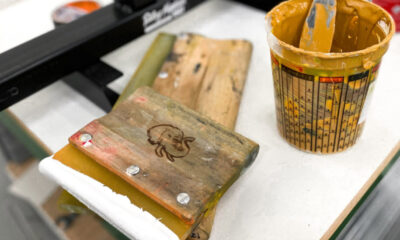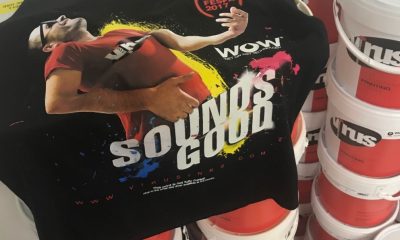Printing process-color graphics with water-based UV inks offers real benefits in terms of reducing the ink buildup that can occur with conventional UV inks. However, using these inks does introduce challenges for the printer. The main change users experience with water-based UV is that the tack of the ink (how sticky it is during printing) is higher than with conventional UV. This creates a tendency for the water-based ink to release less easily from the mesh than conventional formulations.
Printing process-color graphics with water-based UV inks offers real benefits in terms of reducing the ink buildup that can occur with conventional UV inks. However, using these inks does introduce challenges for the printer. The main change users experience with water-based UV is that the tack of the ink (how sticky it is during printing) is higher than with conventional UV. This creates a tendency for the water-based ink to release less easily from the mesh than conventional formulations. Consequently, the mesh stays in contact with the ink and substrate longer than is ideal, which can significantly reduce print quality. The most common ways to overcome this problem are to increase mesh tension and/or to increase off-contact or peel height. Using greater off-contact or peel is the easiest solution, but it does result in image distortion. A better solution is to increase mesh tension in order to assure that the mesh pulls away from the printed surface readily. Note, however, that the tension increase must be within the working tension limitations of the frame. Increasing off-contact or peel height also leads to increased tension in the screen during the print stroke. So be careful not to go too high with any of these adjustments; otherwise, you will take the mesh past its elastic limit and you will lose tension.

 Case Studies2 months ago
Case Studies2 months ago
 Art, Ad, or Alchemy2 months ago
Art, Ad, or Alchemy2 months ago
 Andy MacDougall2 months ago
Andy MacDougall2 months ago
 Columns3 weeks ago
Columns3 weeks ago
 Editor's Note3 weeks ago
Editor's Note3 weeks ago
 Marshall Atkinson3 weeks ago
Marshall Atkinson3 weeks ago
 Thomas Trimingham2 months ago
Thomas Trimingham2 months ago
 Case Studies3 weeks ago
Case Studies3 weeks ago






